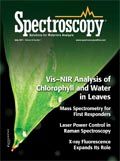Laser World of Photonics Lures Leading Lights from Industry and Research
Visitors from 80 countries gathered in Munich, Germany, on May 23-26 to attend the Laser World of Photonics conference. Because optical technologies are considered emerging technologies, the event focused on "Lasers and Laser Systems for Production Engineering," "Green Photonics," and "Biophotonics and Life Sciences."
Visitors from 80 countries gathered in Munich, Germany, on May 23–26 to attend the Laser World of Photonics conference. Because optical technologies are considered emerging technologies, the event focused on “Lasers and Laser Systems for Production Engineering,” “Green Photonics,” and “Biophotonics and Life Sciences.”
The Federal Ministry of Education and Research (BMBF) unveiled its promotional package “Photonics Research Germany” on the trade fair’s opening day. Dr. George Schütte, secretary of state at the BMBF, announced the allocation of 1 billion euros over the next 10 years to promote research and development in the photonics sector.
According to Günther Braun, CEO and president, Rofin-Sinar Technologies (Hamburg, Germany), sectors in strong demand at the event included electronics, photovoltaic, and automotive. Growth areas indentified were in medical technology, biophotonics, renewable energies, and electromobility.
At the event’s World of Photonics Congress, 3250 international participants attended six conferences, exchanging ideas among scientists, students, and users from diverse countries. The 20th event saw an increase in visitor numbers to 27,500, with more than 1100 exhibitors and represented companies. The last time the trade show was held in Munich was in 2009, where 24,000 visitors met with 1040 exhibitors.
The top five visitor countries apart from Germany were France, Great Britain and Northern Ireland, Switzerland, Japan, and the US. Visit www.world-of-photonics.net for more information.

New AI Model Accelerates Infrared Imaging for Protein Analysis, Study Reveals
May 7th 2025A new study led by Ayanjeet Ghosh of the University of Alabama presents a transformative approach to analyzing infrared (IR) imaging data, with promising implications for neurodegenerative disease research.